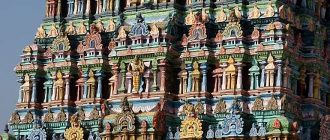The Intihuatana Stone in Machu Picchu is thought to have served as a solar calendar as well as a significant spot for spiritual ceremonies of the Incas. Read our guide for more facts and information…
Intihuatana stones were ritual stones that had a prime role in the celestial observations of the Incas. They could have even assisted them in establishing a calendar of activities to be followed, based on their observation of the stars and celestial bodies. Besides, these stones had a deep religious significance, as they served as altars for spiritual ceremonies. The dual purpose of these stones demonstrates the Incas’ belief in the relationship between their deities and astronomical phenomena, which in turn relates to astrology.
Machu Picchu Intihuatana Pyramid
The Intihuatana in Machu Picchu is positioned above a pyramidal platform behind the citadel’s main temple. The pyramid was created by converting the edges of the hill into embankments forming terraces that render a pyramidal appearance. The mysterious design allows the best view of the grand Main Square. It is said that the Incan Emperor or the authorities used this spot to issue orders to the multitudes gathered in the Main Square. The hill that houses the Intihuatana is made up of about 78 terraces.
The Intihuatana Stone
Built from granite rock, the structure is shaped into what appears like three steps, with a rectangular prism located at the center. The 36-meter high prism points to the southeast, where the sun shows up during the winter solstice. It looks like a sundial and served as the supreme sacral element of any Inca city.
‘Hitching Post of the Sun’
In the Quechua language, the word ‘inti’ refers to the sun, the word ‘wata’ means ‘to hitch up.’ The meaning conveys that Intihuatana is an instrument to hitch up the sun. Hence, the English expression ‘The Hitching Post of the Sun’ is used to refer to the Intihuatana stone. During the two equinoxes, namely March 21st and September 21st, the position of the sun at midday is such that, there is no shadow formation at all. Believing that it is the exact moment at which the sun is on the pillar with all its might, the Incas held rituals to ‘tie the sun’ to the stone.
Scientific purpose
The stone served as a measuring instrument based on the phenomena of light, enabling the Incans to assess light and shadows during various seasons and periods, particularly equinox. It is an accurate indicator of the date at which the two equinoxes occur. Its alignment with other seasonal occurrences makes it an indicator of significant celestial periods. Scientists believe that the Incas measured the angle of the sun using this stone in order to predict the occurrence of the solstice and equinox.
Special powers
It is said that Intihuatana stones were set up by Shamans, who served as mediators between the physical and spiritual realms. They were capable of accessing supernatural dimensions to assist in restoration or create balance. According to Shamanic legends, when a spiritually sensitive person’s forehead touches the Intihuatana stone in Machu Picchu, his or her vision is opened to the spirit world. For the Incas, it was the religious focal point that contained the god of Force. When the stone was broken, the Incas believed that the deities held by it either departed or died.
The Spaniards, who destroyed the Intihuatana stones in other Incan cities, never gained access to Machu Picchu and its Intihuatana Stone. Many tourists still believe that putting their hands on the stone can fill them up with powers.





